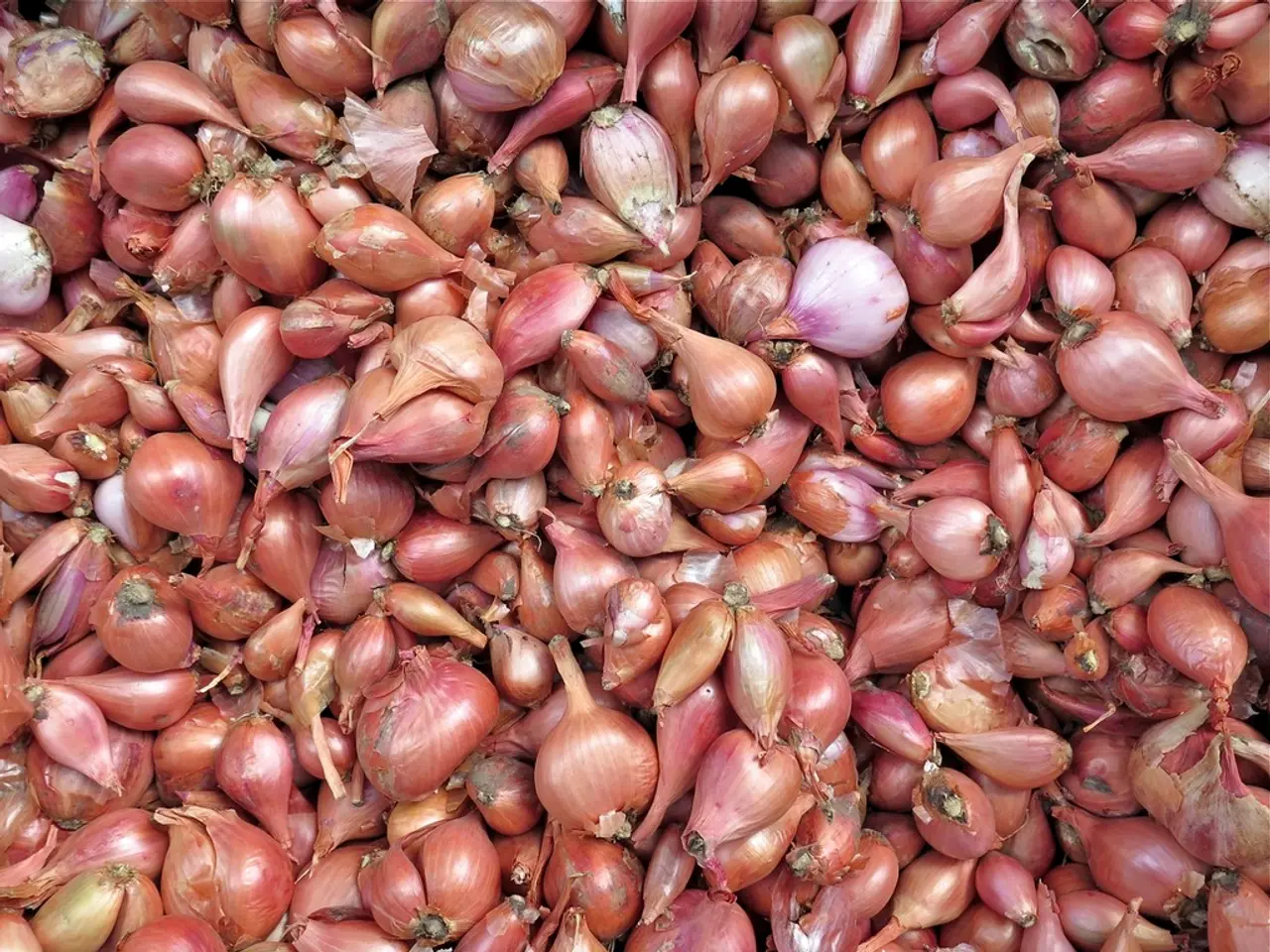Comprehensive Tutorial on Cultivating and Storing Onions: A Detailed Walkthrough
Onions are a versatile vegetable that can be grown in your home garden, offering a fresh and flavourful addition to your meals. Here's a step-by-step guide on how to grow onions successfully.
Planting Onions
Onions thrive in full sun and well-drained, compost-rich soil. For planting, sow seeds about a quarter-inch deep either directly in the garden in early spring or start them indoors 6 to 8 weeks before the last frost. Onion sets, small onions that are grown from seeds but not allowed to mature, are also available in almost any garden center during spring. These are best planted early in the season when the soil is still cool and moist.
Caring for Onions
Once planted, keep the soil consistently moist during germination and growth, but avoid overwatering to prevent rot. As bulbs start forming, regular watering is crucial, but stop watering and fertilizing, especially nitrogen-rich fertilizers, about 6 weeks before harvest to encourage bulb ripening. Adding potassium-rich feed or organic mulch around June can help bulb development. Avoid overcrowding and ensure good air circulation to reduce disease risk.
Harvesting and Curing Onions
Onions are ready to harvest when their foliage naturally yellows and falls over. Harvest by gently loosening soil and pulling up onions by the bulb, not the stalks, to avoid damage. Leave onions in the sun, on the soil surface for a day or two to begin drying without washing or trimming tops and roots yet.
Curing, which is essential for long storage, should be done in a warm (75°F to 80°F), dry, well-ventilated shaded area. Spread them out in a single layer for 2–4 weeks until the roots stiffen and skins dry to a papery texture. Curing prevents rot and disease during storage. After curing, trim the dry tops and roots before storing onions in a cool, dry, ventilated place. Proper curing can allow onions to store up to a year.
Variety of Onions
Various types of onions are available in white, yellow, and red colours. The commonly used cooking onion is often referred to as just an onion and is medium-sized, hardy, easy to grow, and can be stored for a long time. Other types include the sweet or Spanish onion, excellent for adding to salads, eating raw, or making onion rings, but not as resilient as cooking onions and requiring more space to grow.
Scallions, also known as green onions, are an excellent choice if you have difficulty growing onion bulbs or are simply interested in greens, and can be planted early in the spring and will continue to grow throughout the summer, giving you a constant supply of fresh greens.
Special Onion Types
The Walking Onion, also known as the Egyptian or Tree Onion, is a type of perennial onion that propagates itself by dropping flowerheads randomly around the plant. Shallots have a sweeter taste than onions and are a worthwhile addition to any diet.
Onions can be braided and stored in nylons, bags, or boxes for best results. Onions grown from onion sets can still be stored for a couple of months with proper curing.
Onion Classification
Onions are categorized into long-day, short-day, and day-neutral onions, with the category determined by the number of daylight hours required for bulb production. Long-day onions thrive in the north and require approximately 14-15 hours of daylight, while short-day onions, which need about 10 hours of daylight, are best suited for the south.
Freezing Onions
Onions can be frozen whole if kept in a place that stays slightly below freezing. Frozen onions can preserve them for use in recipes, extending their shelf life.
Weed Management
It's not necessary to keep onions weed-free, but it's important to ensure that weeds don't shade the plants from the sun.
Perennial Onions
Perennial onions are a great addition to any garden as they require minimal maintenance and will come back year after year.
By following these best practices, you can ensure healthy growth, good yield, and extended storage life of homegrown onions. Happy gardening!
- Onions, a versatile vegetable, can be grown in your home garden for a fresh addition to meals, following the guide provided.
- For planting onions, choose full sun and well-drained, compost-rich soil, and sow seeds or plant onion sets.
- Water the soil consistently during germination and growth, but avoid overwatering to prevent rot.
- Stop watering and fertilizing 6 weeks before harvest to encourage bulb ripening, and add potassium-rich feed or organic mulch for bulb development.
- Onions are ready to harvest when foliage yellows and falls over, and should be gently loosened and left to dry in the sun for a day or two before curing.
- Proper curing in a warm, dry, well-ventilated shaded area for 2-4 weeks allows onions to store for up to a year.
- Various types of onions are available in white, yellow, and red colors, with cooking onions being the most common and easy to grow.
- Special onion types like the Walking Onion and shallots can add variety to your garden and cooking lifestyle, requiring different conditions and care for successful growth.




